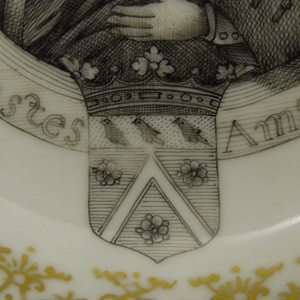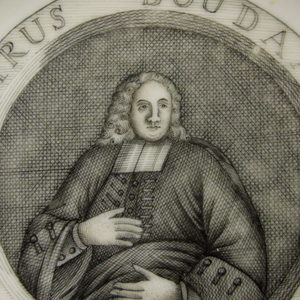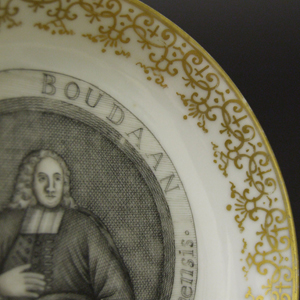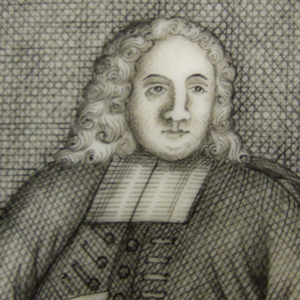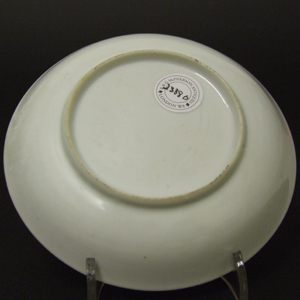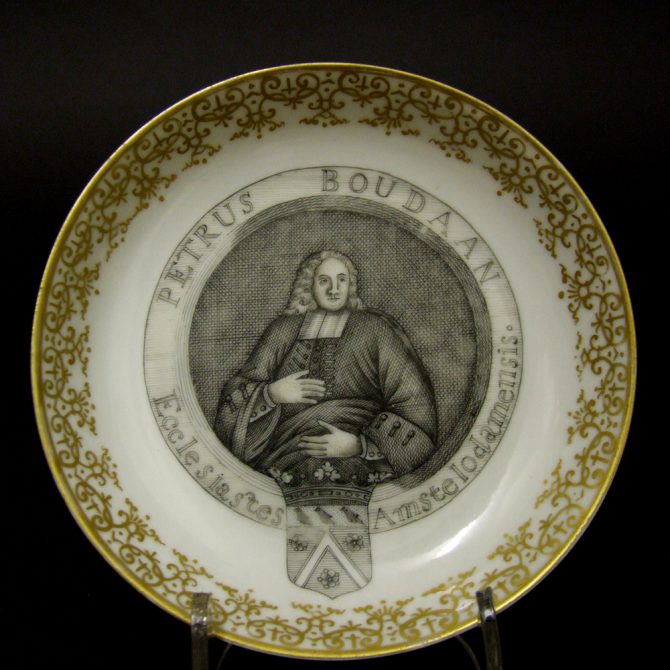
QIANLONG 1736 – 1795 Chinese Export Porcelain
A Rare Early Qianlong En Grisaille Porcelain Saucer Made for the Reverend Ds. Petrus Boudaan (1666-1734) After an Engraving by Petrus Schenk of Amsterdam. This Finely Painted Service was Produced, According to Dr. Kroes, in c.1740 – 1745.
SOLD
- Condition
- Perfect.
- Size
- Diameter : 11.5 cm (4 1/2 inches)
- Provenance
- N/A
- Stock number
- 23380
- References
- An identical saucer is in the permanent collection of the Amsterdams Hisorisch Museum, see : China for the West, Chinese Porcelain & other Decorative Arts for Export Illustrated from the Mottahedeh Collection (David S. Howard and John Ayers, Sotheby`s, 1978) Volume 1 page 255, plate 250. For another example see : La Porcelaine Des Compagnies Des Indes A Decor Occidental (Francois et Nicole Hervouet, Yves Bruneau. Flammarion, 1986. ISBN 2-08-010990-1) page 276, fig. 11.54. For a tea canister and cover, a teabowl and saucer as well as the engraving the piece is based on see : Chinese Armorial Porcelain For The Dutch Market (Dr Jochen Kroes, Waanders Publishers, 2007. ISBN 978-90-400-83310) pages 298 to 300.
Information
In the early 1740`s two tea services were made to commemorate Boudaan. Apart from the different border decoration, both services are painted very similarly with a large medallion with an effigy of the reverend dressed in official robes, within a circular band inscribed: "PETRUS BOUDAAN. Ecclesiastes Amstelodamenis." His coat of arms -- a chevron with three roses and in chief three martlets, and a coronet -- is depicted on this saucer on the lower part of the inscribed band. His portrait was copied from an engraving made and printed by Petrus Schenk from Amsterdam after a painting by Frederik Ottens.
Ds. Petrus Boudaan (born Sint Laurens, close to Middelburg, 26 August 1666; died Hofstede Leeuwenburg, Langbroek, 20 May 1734; buried Amsterdam) is one of the several Dutch vicars and theologians depicted on 18th century Chinese export porcelain, including Ds. Johannes Koch and Ds. Gijsbertus Voet in the same period, and Ds. Jacobus Boon and Ds. Christiaan Tisteijn in the late 18th century. Boudaan belonged to a family from Flanders with descendants in the Netherlands from the late 16th century). Boudaan studied theology in Franeker and Leiden and in 1691 he preached his first sermon in Rijnsburg. After that, he became a vicar in Arnhem (1693), Utrecht (1703), and finally in Amsterdam (1710-1733), where he gave his first sermon in the Oude Kerk in 1710 and was a vicar of the Dutch Reformed Church in Amsterdam which was served from 1710 until 1733. Due to the fact some of his sermons had been printed in 1712, in a publication of the Utrecht professor Petrus Burman, he might have been a preacher of significance. Boudaan married twice. He had two sons by his second wife. One of his younger sons, Gualterus Petrus Boudaan (1704-1781), was probably instrumental in commissioning this service. Gualterus was a highly influential man in Amsterdam, joining the city council in 1730 and being appointed director of the Amsterdam VOC Chamber in 1741. Gualterus Petrus probably ordered this commemorative service after 1741 as a somewhat late tribute to his father who died in 1734. When Boudaan died, several funeral poems were written about him, but not much is known about his character or his activities.
